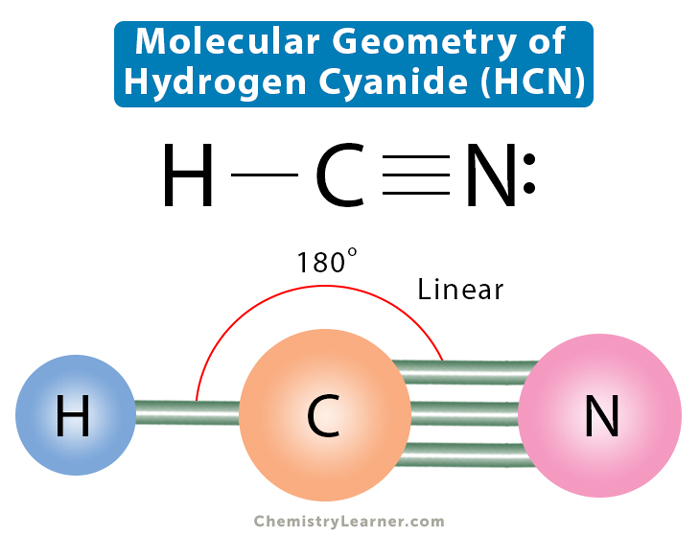Molecular Geometry of Hydrogen Cyanide (HCN)
The molecular formula of hydrogen cyanide (HCN) shows that it has one hydrogen (H) atom, one carbon (C) atom, and one nitrogen (N) atom. Hydrogen, carbon, and nitrogen lie in Groups 1, 14, and 15 of the periodic table. The number of valence electrons in H, C, and N are 1, 4, and 5, respectively. Hydrogen needs one electron, carbon requires four, and nitrogen needs three to complete its valence shell. Therefore, the three atoms would share electrons and form covalent bonds [1-4].
Lewis structure represents how covalent bonds are formed in molecules. Lines indicate bonds and dots depict lone pairs. The total number of valence electrons in CO2 is 10. Carbon is less electronegative than nitrogen. It will occupy the central position. Hydrogen and nitrogen occupy the end positions. Carbon will make a single bond with hydrogen, leaving the remaining three electrons to bond with nitrogen. Therefore, it will form a triple bond with nitrogen. Thus, all atoms in HCN will have complete valence shells, fulfilling the octet rule.
From the Lewis dot structure, the HCN molecule will have two regions of electron density around the central carbon atom. We use VSEPR theory, which is an accurate way of predicting the shape of a molecule. According to this theory, the bond pairs will stay as far apart as possible so that the repulsion is minimum. Such an arrangement is only possible when the molecule is linear with a bond angle of 180°. No lone pair-lone pair repulsions or lone pair-bond pair repulsions are present in the molecule. It makes the molecule maintain a symmetrical linear shape. The VSEPR notation is AX2.
